Introduction
When do rabbits stop growing? Let’s find out.
Picture this: a cozy burrow, filled with soft hay and the pitter-patter of little paws. It’s here that we witness the magical journey of a cute baby bunny transforming into a majestic adult rabbit.
We’ll dive deep into the secrets of rabbit growth, exploring the signs that indicate your rabbit has reached its full size, the impact of genetics on their development, the true effects of neutering/spaying on their growth, and even the role that nutrition plays in their overall well-being. Oh, and let’s not forget the thrilling topic of illnesses and their impact on rabbit growth!
So, get ready to witness the astounding transformations, from the tiniest of kits to the proud and wise elders. As we journey together, I’ll be your trusty guide, sharing my tips, experiences, and the quirky anecdotes that make rabbits truly extraordinary companions.
Whether you’re a proud bunny parent, thinking of welcoming a fluffy addition to your family, or just a curious rabbit enthusiast like myself, this article is your ultimate go-to resource. So buckle up, grab a carrot (or two), and let’s embark on this adrenaline-pumping, tail-wagging, nose-twitching expedition into the world of rabbit growth!
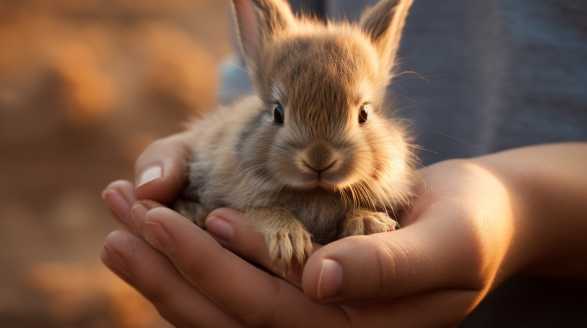
Key Takeaways
- Rabbits reach their full growth potential around 8-12 months of age, with balanced proportions, stable weight, and settled personality being signs of reaching maturity.
- Genetics play a significant role in rabbit growth, with genes like MC1R and IGF-1 influencing size and development.
- Neutering/spaying has positive effects on growth, behavior, and health by preventing unwanted breeding, reducing aggression, and lowering the risk of reproductive diseases.
- Proper nutrition is essential for rabbit growth, with a diet consisting mainly of hay, fresh vegetables, and limited pellets.
- Illnesses, such as gastrointestinal disorders and dental problems, can hinder growth and development, so regular veterinary care and a clean environment are crucial.
- Understanding the milestones and factors that affect rabbit growth, such as housing, socialization, and genetics, can help ensure a healthy and happy bunny.
Signs that Indicate Your Rabbit Has Reached its Full Growth Potential
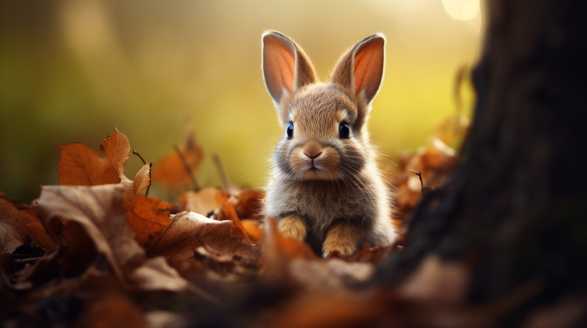
As a proud rabbit owner, it is essential to understand the growth stages and milestones your furry friend goes through. Curiosity often sparks the question: when will my rabbit reach its full growth potential?
Let’s hop right into it!
1. Size Matters
A primary indicator of your rabbit reaching its full growth potential is its size. Initially, baby rabbits, also known as kits, are tiny and delicate, fitting in the palm of your hand.
Eventually, your rabbit will reach a size where further growth becomes minimal. While specific breeds have varying growth patterns, most rabbits tend to reach their full size around 8 to 12 months of age.
2. Balanced Proportions
Young rabbits often have disproportional body features, such as big ears or long limbs, but that’s what makes them so adorable! However, as they approach adulthood and reach their full growth potential, you will notice their body proportions becoming more balanced. Their long legs will catch up with their body, and their ears will appear more in harmony with their overall size.
3. Stable Weight
When rabbits are still growing, their weight tends to fluctuate. You might notice that your rabbit suddenly gains a few grams or even loses weight during this period.
Regular monitoring of your rabbit’s weight can help you identify when they have reached this stage. A steady weight for a few consecutive weeks is a strong indication that your rabbit has matured.
4. Sexual Maturity
One of the most prominent signs that indicate your rabbit has reached its full growth potential is sexual maturity. Male rabbits, known as bucks, will develop larger testicles, while female rabbits, called does, will experience changes in their genital area.
If your rabbit has reached sexual maturity, it’s advisable to consider spaying or neutering to prevent certain health issues and unwanted breeding.
5. Bone Structure
A rabbit’s bone structure can also provide valuable insights into its growth potential. When your rabbit is still growing, you may notice some flexibility or slight bowing of their bones.
This solid bone structure indicates that your rabbit has achieved its full growth potential.
6. Fur Coat Completeness
Another visual clue that your rabbit is approaching its full growth potential is the completeness of its fur coat. Young rabbits often have sparse fur or patches of hair during their early developmental stages.
A full, luxurious coat suggests that your rabbit has reached adulthood.
7. Settled Personality
Just like humans, rabbits go through various behavioral changes as they grow. Young rabbits tend to be more energetic, restless, and curious.
They become calmer, more relaxed, and content with their surroundings. This shift in behavior is a positive sign that your rabbit has reached a mature stage of development.
8. Dental Development
Rabbits have continuously growing teeth, which can be a useful indicator of their growth potential. Baby rabbits often have small, sharp, and chisel-shaped teeth, gradually replaced by larger and more robust teeth as they mature.
9. Lifespan Expectancy
It is essential to be aware of the average lifespan expectancy of rabbits to understand when they have reached their full growth potential. Smaller breeds tend to reach their maximum size earlier and have shorter lifespans, typically around 5-8 years.
Knowing your rabbit’s breed and its lifespan expectancy can help you determine when they have reached their full growth potential.
Watching your rabbit grow from a tiny ball of fur to a fully matured bunny is a journey. By observing the signs mentioned above, you can determine whether your rabbit has reached its full growth potential.
Provide your bunny with a healthy diet, plenty of exercise, and the love and care they deserve as they continue to blossom into the wonderful companion that they are!
The Impact of Genetics on the Growth of Rabbits
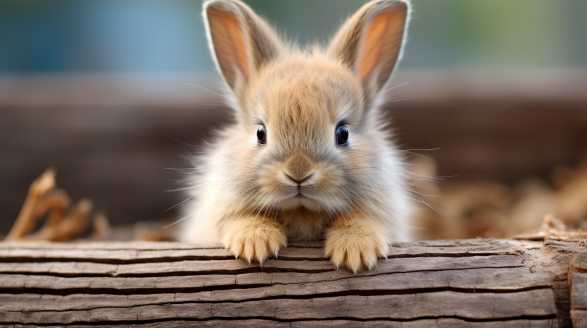
Raising rabbits is an art that requires meticulous attention to details. From their diet to their housing, every aspect must be carefully considered to ensure their optimal growth and development.
The genes they inherit from their parents play a crucial role in determining their size, weight, and overall growth potential. we will explore the fascinating world of genetics and the impact it has on the growth of rabbits.
The Basics of Genetic Inheritance
Genetics is the study of how traits are passed down from one generation to the next. In rabbits, just like in humans, genes are responsible for determining various characteristics, including size, coat color, body conformation, and even temperament.
When two rabbits breed, their genetic material combines, creating a unique set of genes for their offspring. Some genes are dominant, meaning they will be expressed in the rabbit’s physical appearance, while others are recessive and will only appear if both copies of the gene are present.
Understanding Growth Genes
When it comes to the growth of rabbits, certain genes hold the key to their development. These genes influence the rabbit’s overall size, bone structure, muscle mass, and even the rate at which it matures.
MC1R Gene
The MC1R gene, also known as the “growth gene,” plays a fundamental role in determining the size and weight of a rabbit. This gene is responsible for controlling the production of melanin, the pigment that gives color to the fur.
Rabbits with a specific variant of the MC1R gene tend to be larger and heavier than those without it.
IGF-1 Gene
The IGF-1 gene, short for Insulin-like Growth Factor 1, is another critical player in rabbit growth. This gene controls the production of a protein called IGF-1, which promotes cell growth and division.
Breeding for Optimal Growth
Breeding rabbits with desirable growth traits requires careful selection and planning. By choosing rabbits with favorable growth genes, breeders can increase the likelihood of producing offspring with optimal growth potential.
- Pedigree Analysis: Analyzing the pedigree of potential breeding rabbits helps identify whether they carry the desired growth genes.
- Genetic Testing: Genetic testing can provide valuable insights into the genetic makeup of rabbits, enabling breeders to make informed decisions when selecting breeding pairs.
- Inbreeding Avoidance: While inbreeding can concentrate desirable traits, it also increases the risk of inheriting genetic disorders. By avoiding excessive inbreeding, breeders reduce the chance of passing on harmful genes.
Environmental Factors
While genetics undeniably play a significant role in rabbit growth, it is essential to consider the impact of environmental factors as well. Factors such as diet, living conditions, and overall care can heavily influence a rabbit’s growth potential.
The impact of genetics on the growth of rabbits cannot be underestimated. The genes inherited from their parents dictate their size, weight, and overall growth potential.
By combining selective breeding practices with proper environmental conditions, we can unlock the full growth potential of these furry creatures. So, let’s embrace the fascinating world of genetics and witness the amazing impact it has on the growth of rabbits!
The Impact of Neutering/Spaying on Rabbit Growth
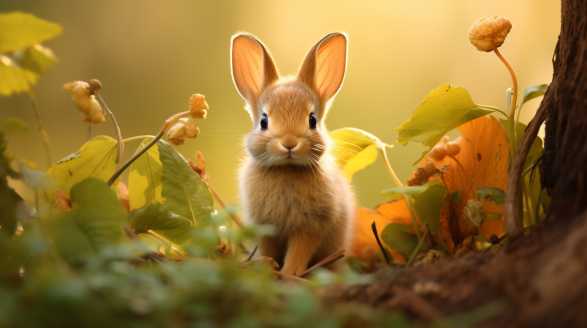
As a proud rabbit owner, I have always been curious about the impact of neutering or spaying on my furry friend’s growth. It’s only natural to wonder how such a procedure can affect the overall development and well-being of our beloved rabbits.
Neutering and Spaying: What’s the Difference?
Before we look into the impact of these procedures on rabbit growth, let’s clarify the difference between neutering and spaying. Neutering typically refers to the procedure performed on male rabbits, which involves the removal of their testicles.
Neutering: What You Should Know
Neutering male rabbits offers several benefits beyond simply preventing unwanted pregnancies. Let’s take a closer look at some of the positive impacts this procedure can have on your bunny’s growth:
- Preventing aggressive behavior: Neutering significantly reduces the likelihood of territorial aggression in male rabbits, making them more docile and friendly companions.
- Decreasing spraying: Male rabbits are known to spray urine as a way of marking their territory. Neutering can help minimize or even eliminate this unwanted behavior.
- Reducing risk of reproductive diseases: By removing the testicles, neutering eliminates the risk of testicular cancer and reduces the chances of other reproductive diseases.
- Contributing to a longer lifespan: Neutered male rabbits tend to live longer and healthier lives, primarily due to the reduction in the risk of various diseases.
Spaying: The Impact on Female Rabbits
Now that we’ve explored the positive effects of neutering, let’s turn our attention to the impact of spaying on rabbit growth and development. Here are some important factors to consider:
- Preventing unwanted pregnancies: One of the key benefits of spaying female rabbits is preventing unplanned litters. Rabbits have a high reproductive capacity, and spaying eliminates the risk of accidental pregnancy.
- Avoiding uterine and ovarian diseases: Spaying significantly reduces the risk of deadly uterine cancer and other reproductive diseases that commonly affect female rabbits.
- Preventing behavioral issues: Unspayed female rabbits can exhibit mood swings and become more aggressive during their reproductive cycle. Spaying helps maintain their hormonal balance, leading to a more stable and amiable temperament.
- Enhancing urinary tract health: Spayed female rabbits are less prone to developing urinary tract infections, which can cause pain and discomfort.
The Impact on Rabbit Growth: Let’s Unravel the Mystery!
Now, let’s tackle the million-dollar question: how does neutering or spaying affect rabbit growth? While these procedures don’t directly influence physical growth, they can indirectly contribute to your bunny’s overall well-being, which in turn promotes healthy development.
Nutritional considerations for growth:
When it comes to your rabbit’s growth, it’s crucial to provide a balanced and nutritious diet. Here are some key points to remember:
- Offer a variety of fresh vegetables, such as leafy greens, bell peppers, and carrots, to ensure a well-rounded diet.
- High-quality hay should constitute the majority of their food intake, promoting healthy digestion and dental health.
- Limited amounts of pellets formulated specifically for rabbits can be included, but avoid overfeeding to prevent obesity.
Exercise and enrichment:
Regular exercise and mental stimulation are essential for a rabbit’s overall growth and development. Consider the following tips:
- Provide ample space for your rabbit to hop and explore, either indoors or in a secure outdoor enclosure.
- Offer toys and materials suitable for chewing, as rabbits have continuously growing teeth that need to be worn down.
- Rotate enrichment items regularly to keep your rabbit engaged and prevent boredom.
Veterinary care and regular check-ups:
To ensure optimal growth and well-being for your neutered or spayed rabbit, regular veterinary check-ups are essential. Your veterinarian can monitor their general health, address any concerns promptly, and provide expert advice tailored to your bunny’s specific needs.
Neutering and spaying have numerous benefits for both male and female rabbits. While they may not directly impact physical growth, these procedures promote overall wellness, prevent reproductive diseases, and improve behavioral aspects.
Together, we can provide them with a happy and healthy life that they truly deserve.
The Growth Stages of Rabbits: When Do They Stop Growing?
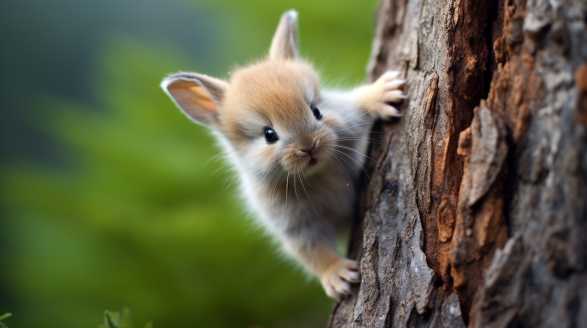
Hey there, fellow rabbit enthusiasts! Today, we’re diving headfirst into the world of rabbit growth stages.
Buckle up and prepare to uncover everything you need to know about the remarkable journey from the tiny fluffball to the majestic bunny.
The Early Days: Bunny Birth to 8 Weeks Old
The Journey Begins
Ah, the miracle of birth! As a baby bunny, I start my adventure covered in a soft, downy fur, my eyes sealed shut, and totally reliant on my wonderful mother for survival.
Don’t worry though, my growth is about to kick into high gear!
Week 1: Fur, Fur, and More Fur
During my first week, my fur begins to thicken, and my eyes gradually open. Although I’m still quite tiny, my curiosity and energy levels skyrocket.
I may still stumble around a bit, but hey, I’m learning!
Week 2: Hopping into Action
By now, I can confidently hop around and explore my surroundings, albeit with a bit of an adorable wobble. My front teeth start growing rapidly, and I become more independent, nibbling on solid foods while still nursing from my mom.
Week 3: Personality Takes Shape
As I enter my third week of life, my personality begins to shine through. I become more social and engaging, always ready to play and interact with my siblings.
Keep an eye out for my exploits; they’re sure to bring a smile to your face!
Week 4: Growing by Leaps and Bounds
Here comes a growth spurt! During my fourth week, I experience a significant increase in size, and my baby fur begins to be replaced by my adult coat.
It’s an exciting time, and I can’t wait to see what’s next!
Week 5-8: Almost There!
As I approach the two-month mark, my body becomes sleeker, and my muscles strengthen. My playful antics reach new heights, and my curiosity knows no bounds.
Adolescence: 8 Weeks to 7 Months
Dramatic Changes Await
Welcome to my teenage years! Just like humans, I go through a period of immense growth and transformation during adolescence.
Month 2: Spurts and Bounds
In my eighth week, I continue to grow at a rapid pace. My bones lengthen, and my muscles continue to develop.
Don’t worry, I’ll get the hang of it eventually!
Month 3: The Legendary Bunny Hop
Ah, the iconic bunny hop! During my third month, I perfect this adorable maneuver that will surely bring a smile to anyone’s face.
I’m undoubtedly entering my prime and becoming a confident little bunny!
Month 4: Exploring the World
Now that I’m four months old, I’m equipped with the energy and curiosity to explore the world around me. I love hopping around, discovering nooks and crannies, and nibbling on anything that captures my fancy.
Month 5-7: The Final Stretch
During these last three months of adolescence, my growth gradually slows down, but I’m still stretching and refining my physique. My transition from a rambunctious teenage rabbit to a full-fledged adult is well underway.
Adulthood and Beyond: The Final Stages
An Elegant Rabbit Emerges
At last, I have reached adulthood! By the time I’m fully mature, around seven months old, my growth has stopped, and my physique has settled into its adult proportions.
Aging Gracefully
As I age, my body may gradually slow down, but my spirit remains young at heart. Depending on my breed, I can continue to live a full and joyful life for many years to come, sharing love and companionship with those lucky enough to have me as their furry friend.
Well, there you have it, fellow rabbit enthusiasts! From my humble beginnings as a tiny, blind fluffball to my confident adulthood, the growth stages of rabbits are filled with wonder and excitement.
Now that you know when rabbits stop growing, go forth and be the best companion to your furry friend. Hop, hop, hooray!
Hey there, fellow rabbit enthusiasts! Today, I’m here to look into a captivating topic that often goes unnoticed—the intriguing link between dental health and the growth of rabbits.
So, get ready, grab some carrots, and let’s explore this captivating journey together!
Dental Health: More than Just a Set of Chompers!
We all know that dental health is important for humans, but did you know that it plays a crucial role in a rabbit’s growth as well? Rabbits have continuously growing teeth, much like a conveyor belt of chompers!
The Importance of Chewing
Rabbits are natural chewers. Not only is it an instinctive behavior, but it’s also necessary for wearing down those ever-growing teeth.
Signs of Dental Problems
Rabbits are masters at hiding their discomfort, but knowing the signs of dental problems is essential for their growth and well-being. Here are some red flags to look out for:
- Loss of appetite: If your rabbit suddenly loses interest in food, it could be a sign of dental issues. Painful chewing can discourage them from eating.
- Excessive drooling: Excessive drooling is not only messy but also an indication that something might be amiss in your rabbit’s mouth.
- Weight loss: Dental problems can make eating uncomfortable, leading to weight loss over time.
- Changes in fecal pellets: Keep an eye out for softer or misshapen fecal pellets, which can indicate gastrointestinal distress due to dental issues.
- Unusual behavior: If your usually happy-go-lucky rabbit becomes irritable or displays signs of discomfort, it might be time for a dental check-up.
Dental Care: Bunny-Sized Toothbrushes and Beyond
Now that we understand how crucial dental health is for a rabbit’s growth, let’s dive into the realm of dental care. Just like us, rabbits need regular check-ups and attention to ensure their teeth stay healthy and their growth remains on track.
Proper Diet: A Foundational Brick
A healthy, well-balanced diet is the foundation for good dental health. A rabbit’s diet should consist primarily of hay and unlimited water, supplemented with appropriate vegetables and a limited amount of pellets.
Chew-tastic Toys: The Ultimate Rabbit Joyride
Rabbits need plenty of activities to keep their teeth occupied. A selection of safe and rabbit-friendly toys, such as wooden chew blocks, will not only prevent boredom but also help maintain their dental health.
Regular Veterinary Check-ups: Bunny Dentist to the Rescue
Just like we visit the dentist, rabbits need regular check-ups too! A knowledgeable veterinarian should examine your rabbit’s teeth at least once a year, or more frequently if any dental issues arise.
Taking a Closer Look: The Science Behind Rabbit Growth and Dental Health
Now that we’ve covered the basics, let’s shed some light on the intricate scientific connection between rabbit growth and dental health. It all boils down to the rabbit’s ability to properly chew and digest their food, allowing for adequate nutrient absorption and, consequently, healthy growth.
The Role of Grinding and Digestion
A rabbit’s teeth and digestive system work hand in hand to support their growth. When a rabbit chews fiber-rich foods such as hay, the grinding action promotes saliva production and stimulates proper digestion.
Dental Issues: A Stumbling Block for Growth
When dental problems arise, it can be a severe blow to a rabbit’s growth and overall health. Malocclusion, tooth spurs, or overgrowth can lead to pain, difficulty eating, malnutrition, and stunted growth.
That’s why dental care and regular check-ups are paramount!
Well, there you have it—a glimpse into the world of dental health and its profound impact on the growth of rabbits. From the importance of chewing, signs of dental problems, and essential dental care practices to the intricate scientific connection between dental health and growth, we’ve covered it all.
So, my fellow rabbit enthusiasts, let’s keep our furry friends smiling from ear to ear. With a well-rounded diet, engaging chew toys, and regular visits to the bunny dentist, we can ensure our beloved rabbits grow up to be healthy, vibrant bundles of joy.
The Role of Nutrition in Rabbit Growth and Development
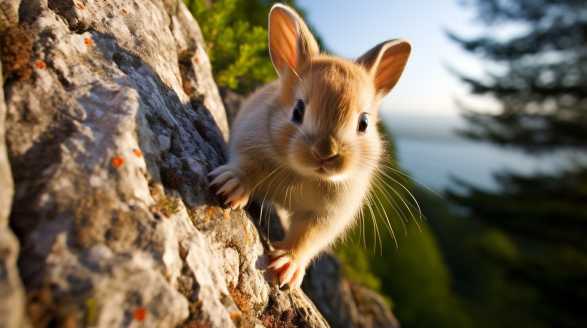
As a rabbit enthusiast, I have always been fascinated by the importance of nutrition in the growth and development of these adorable creatures. Rabbits are delicate beings that require specific nutrients to thrive and reach their full potential.
Understanding a Rabbit’s Digestive System
Before we dive into nutrition specifics, it’s crucial to comprehend how a rabbit’s digestive system works. Unlike humans and other animals, rabbits are hindgut fermenters.
A rabbit’s diet primarily consists of grasses, hay, and fresh vegetables. These provide the necessary fiber that keeps their digestive system healthy and functional.
Key Nutrients for Rabbit Growth
1. Fiber
Fiber is the cornerstone of a rabbit’s diet. It aids in proper digestion, prevents gastrointestinal problems, and helps maintain normal dental health.
Other beneficial hays include orchard grass, oat hay, and meadow hay.
2. Fresh Vegetables
Vegetables provide essential vitamins and minerals that support a rabbit’s growth and development. Leafy greens such as lettuce, spinach, and kale are fantastic sources of nutrients.
3. Pellets
Pellets specially formulated for rabbits are readily available in the market. These should be given in limited quantities, as an excess of pellets can lead to obesity and digestive issues.
4. Water
Water is crucial for a rabbit’s overall health. Always ensure that fresh and clean water is available for your furry friend.
How Proper Nutrition Affects Growth
Proper nutrition plays a significant role in the growth and development of rabbits. Here are some key factors that highlight its importance:
1. Bone Development
A well-balanced diet is crucial for a rabbit’s bone development. Adequate calcium intake helps prevent skeletal deformities and ensures strong, healthy bones.
2. Muscle Development
Protein is an essential nutrient for muscle development. Incorporating a suitable amount of protein-rich foods, such as hay and pellets, helps rabbits build and maintain their muscle mass.
3. Fur Health
A rabbit’s fur is not just for aesthetics. It is an indicator of their overall health.
Foods rich in omega-3 fatty acids, like flaxseeds or chia seeds, contribute to a rabbit’s fur health and prevent dryness or matting.
4. Proper Weight Control
Maintaining an ideal weight is crucial for a rabbit’s overall well-being. Overfeeding can lead to obesity, which can cause a myriad of health problems.
Common Nutritional Problems in Rabbits
Improper nutrition can lead to various health issues in rabbits. Here are some common nutritional problems to be aware of:
1. Gastrointestinal Stasis
Insufficient fiber in a rabbit’s diet can lead to gastrointestinal stasis, also known as a “slow gut.” This condition occurs when the digestive system slows down and eventually stops, causing a painful build-up of gas.
2. Dental Problems
Rabbits’ teeth grow continuously, and a lack of fiber can hinder the natural wear-down process. This can lead to dental problems such as overgrown teeth, tooth spurs, and dental abscesses.
3. Obesity
Overfeeding rabbits with calorie-dense foods, such as treats and pellets, can lead to obesity. Excessive weight gain puts unnecessary strain on their joints, heart, and overall health.
Nutrition plays a vital role in the growth and development of rabbits. By providing a well-balanced diet that includes high-quality hay, fresh vegetables, and limited pellets, we can ensure their overall well-being.
Common Misconceptions about Rabbit Growth and Size
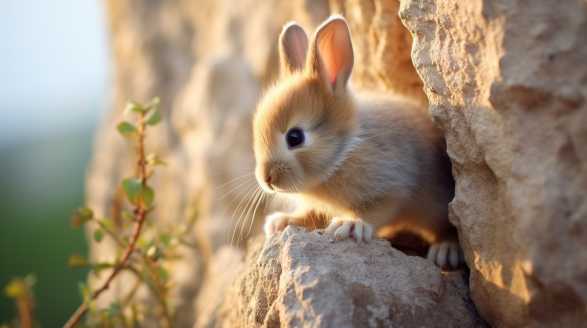
Rabbits are adorable pets that capture the hearts of many animal lovers. They are known for their soft fur, long ears, and cute little twitching noses.
I will address these misconceptions and provide you with accurate information to help you understand your furry friend better.
Misconception 1: All rabbits are small in size
When it comes to rabbits, many people assume that they are all tiny creatures that can fit in the palm of your hand. However, this is far from the truth.
Some breeds, such as the Flemish Giant, can grow to be as large as small dogs, weighing up to 20 pounds! On the other hand, some dwarf rabbit breeds, like the Netherland Dwarf, are indeed petite and can weigh as little as 2 pounds when fully grown.
Misconception 2: Rabbits stop growing after reaching adulthood
It is commonly believed that rabbits reach a certain size and stop growing once they reach adulthood. However, this is not entirely accurate.
During the first few months, rabbits experience rapid growth, both in terms of size and weight. However, their growth rate gradually slows down as they enter adulthood.
Misconception 3: A chubby rabbit is a healthy rabbit
Contrary to popular belief, a chubby rabbit is not necessarily a healthy rabbit. Excessive weight gain can lead to various health problems in rabbits, including heart disease, arthritis, and even reduced lifespan.
Obesity can be dangerous for rabbits, so it’s important to monitor their weight and consult with a veterinarian if you have any concerns.
Misconception 4: Feeding rabbits unlimited carrots is beneficial
Many people associate rabbits with carrots, thanks to popular culture references such as Bugs Bunny. However, feeding rabbits unlimited amounts of carrots is not actually beneficial for their health.
Carrots are high in sugar and can cause digestive issues if fed in excess. A healthy rabbit diet should consist mainly of fresh hay, leafy greens, and a small amount of pellets specifically formulated for rabbits.
Misconception 5: Male rabbits grow larger than females
Some rabbit owners believe that male rabbits grow larger in size compared to females. However, this is not consistently true across all rabbit breeds.
Factors such as genetics, nutrition, and overall health play a more significant role in determining a rabbit’s size than its gender.
Misconception 6: All rabbits have the same growth rate
Each rabbit breed has its own unique growth rate. Some breeds grow faster than others, while some take their time to reach full maturity.
It is crucial to understand your specific rabbit breed’s growth tendencies and consult with a veterinarian to ensure your furry friend is growing as expected.
Misconception 7: A rabbit’s size determines its lifespan
The size of a rabbit should not be used as a determining factor for its lifespan. While it is true that smaller breeds tend to have longer lifespans compared to larger breeds, there are various other factors that contribute to a rabbit’s longevity.
Providing a well-balanced diet, regular veterinary check-ups, and a safe and stimulating environment can help increase your rabbit’s lifespan, regardless of its size.
It is essential to debunk the common misconceptions surrounding rabbit growth and size. Understanding the various factors that influence a rabbit’s growth and knowing how to properly care for them can ensure their well-being and happiness.
So, let go of the misconceptions and embrace the wonderful world of rabbits, appreciating their unique growth journey.
The Effects of Illnesses on Rabbit Growth and Development
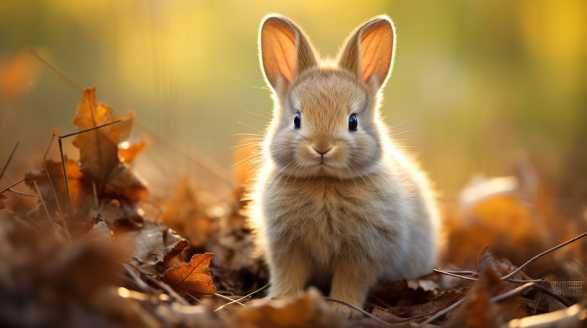
Being a rabbit enthusiast, I have always been fascinated by these adorable furry creatures. In my years of experience, I have encountered various illnesses that can have a significant impact on a rabbit’s growth and development.
So grab a carrot and hop along as we dive into the intriguing world of rabbit health!
Understanding the Vulnerability
Before we look into specific illnesses, it’s important to understand that rabbits, despite their cute appearance, are fragile animals. Their immune systems are not as robust as other household pets, which makes them more susceptible to infections and diseases.
The Dreaded Impact: Illnesses on Growth and Development
1. Gastrointestinal Disorders: A Rollercoaster Ride
The Silent Assassin: Gastrointestinal Stasis
Gastrointestinal stasis, or “GI Stasis” as it is commonly known, is a condition that can cause a complete shutdown of a rabbit’s digestive system. This illness can have severe consequences on their growth and development.
The Terrifying Frenemy: Diarrhea
Diarrhea in rabbits is a potentially life-threatening condition that should never be ignored. It can lead to dehydration, weight loss, and malnourishment, hindering the growth and development of these precious pets.
2. Respiratory Troubles: A Stumbling Block
The Troublemaker: Snuffles
Snuffles, also known as Pasteurellosis, is a common respiratory infection among rabbits. It can result in nasal discharge, sneezing, and difficulty breathing.
3. Parasitic Pests: Tiny Terrorizers
The Silent Suckers: Fleas and Ticks
Fleas and ticks are not only a nuisance but can also contribute to anemia and skin irritations in rabbits. These blood-sucking pests can cause stress and discomfort to the bunny, affecting their growth and development negatively.
The Itchy Invaders: Mange Mites
Mange mites are microscopic parasites that can lead to a condition called mange. It causes intense itching, hair loss, and skin inflammation.
4. Dental Dilemmas: A Chewy Challenge
The Misaligned Menace: Malocclusion
Malocclusion is a dental condition where a rabbit’s teeth do not align properly, leading to overgrowth. This can result in pain, difficulty eating, and malnutrition.
The Road to Recovery: Taking Action
1. Nipping it in the Bud: Timely Medical Intervention
The Importance of Vet Visits
Regular visits to a knowledgeable rabbit veterinarian are crucial for maintaining your rabbit’s health and well-being. Early diagnosis and intervention can prevent illnesses from significantly impacting a rabbit’s growth and development.
2. Bunny Basics: A Balanced Diet
The Power of Proper Nutrition
Providing your bunny with a well-balanced diet is essential for their growth and development. A diet rich in hay, fresh vegetables, and small quantities of pellets will help support your rabbit’s immune system and overall vitality.
3. The Bunny Haven: Creating an Optimal Environment
The Magic of a Clean Habitat
Maintaining a clean living environment is paramount for a rabbit’s health. Regularly cleaning their cage or enclosure, providing fresh bedding, and ensuring proper ventilation helps minimize the occurrence of illnesses that can impede growth and development.
4. Playful Companions: Mental Stimulation
The Importance of Exercise and Socialization
Rabbits thrive on physical activity and social interaction. Regular playtime and companionship with fellow rabbits or humans are crucial for their mental well-being, which indirectly affects their growth and development.
Rabbits are adorable, vibrant creatures that require proper care and attention to reach their full growth potential. Understanding the impact of illnesses on their growth and development is a crucial step in ensuring a long and healthy life for our furry friends.
Now, if you’ll excuse me, I need to chase away a couple of cheeky bunnies from my carrot stash.
What to Expect: Rabbit Growth Milestones
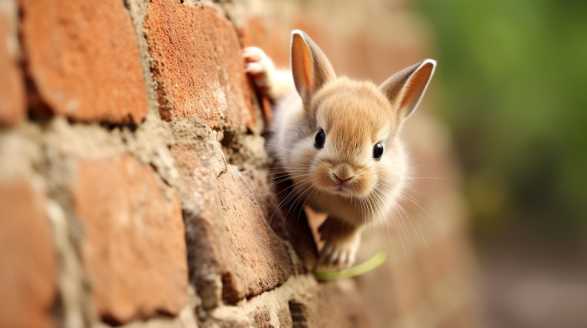
As a proud rabbit owner, I know you must be curious about what to expect as your furry friend grows. It’s an journey to watch your little ball of fluff transform into a fully grown rabbit.
So, let’s hop right into it!
The Arrival of Your Bunny
The moment you bring your new bunny home is filled with anticipation and excitement. You might wonder how quickly your little friend will grow and what changes you can expect to see.
I’ve got you covered with this comprehensive guide to rabbit growth milestones.
Month 1: Baby Bunny Cuties
Ah, the first month of your bunny’s life is an enchanting period. Here are some key milestones you can expect during this time:
- Eyes Opening: Shortly after birth, typically around 10 days, your bunny’s closed eyes will slowly start to open, revealing those adorable button-like eyes.
- Exploring the World: By the end of the first month, your bunny will be exploring its environment, getting curious about everything in its path.
- Fur Growth: During this period, your bunny’s fur will continue to grow, gradually becoming denser and more luscious.
Month 2: Hopping into Playfulness
As your baby bunny enters its second month, you’ll witness some remarkable milestones:
- Teeth Eruption: Around four weeks of age, your bunny’s teeth will start to erupt. Ensure you provide suitable chew toys to help them ease any discomfort.
- Increased Mobility: By now, your bunny will master the art of hopping and exhibit more coordinated movements.
- Weaning Process: At around eight weeks, your baby bunny will be ready for weaning. Introduce solid foods gradually, alongside its mother’s milk.
Month 3: Adolescence Begins
During this phase, your bunny will experience some notable changes:
- Sexual Maturity: Depending on the breed, bucks (male rabbits) may reach sexual maturity as early as three months old. It’s essential to separate males and females at this point to prevent unwanted litters.
- Improved Coordination: As your bunny grows, its coordination and agility will improve significantly. You may see new acrobatic tricks!
- Change in Diet: Transition your bunny to a balanced diet of hay, fresh vegetables, and pellets. Ensure freshwater is available at all times.
Month 4: Peaking in Personality
By the fourth month, your bunny will have established a more distinct personality. Some milestones to expect during this time include:
- Lively Behaviors: Your bunny’s liveliness will be at its peak, showing excitement through playful antics, binkies, and zoomies.
- Establishing Territory: Your rabbit will start marking its territory. This behavior is normal, but consider providing a designated space to minimize unwanted mess.
- Growth Plate Closure: It’s important to note that growth plates close around four to six months. Ensure your bunny receives proper nutrition during this crucial period.
Month 5 and Beyond: Becoming an Adult
Once your bunny reaches the five-month mark, you’ll notice it transitioning into adulthood, with a slightly calmer demeanor. Here are some milestones to expect:
- Full Size: Your bunny will reach its full size and weight by around six to eight months, depending on the breed.
- Socialization Skills: During this period, your bunny will establish its social hierarchy and understand the pecking order among other rabbits or pets.
- Spaying or Neutering: Consider spaying or neutering your bunny, which not only prevents unwanted pregnancies but also helps minimize certain health risks.
Watching your rabbit grow is an incredible experience filled with joy and surprises. From the first glimpse of its little eyes to the fully grown adult hopping around your home, each milestone is a testament to the love and care you provide as a rabbit owner.
Remember, every bunny is unique, and growth milestones may vary slightly between individuals. However, armed with this knowledge, you’ll be well-prepared to cherish and celebrate each stage of your beloved bunny’s growth.
Factors Affecting the Growth Rate of Pet Rabbits
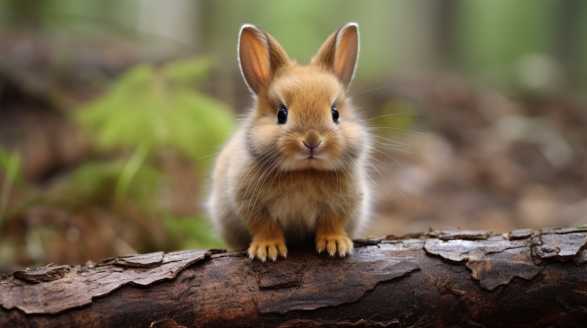
When it comes to owning a pet rabbit, there are various things that can influence its growth rate. As a proud rabbit owner myself, I have learned a lot about the factors that affect the growth of these adorable furry creatures.
Nutrition Matters!
A well-balanced diet is crucial for the proper growth of your pet rabbit. Here are some key nutritional factors to keep in mind:
- Hay: High-quality hay, like timothy or orchard grass, should make up a major part of your rabbit’s diet. This provides essential fiber and aids in proper digestion.
- Fresh Greens: Introduce a variety of fresh, leafy greens to your rabbit’s diet. This can include spinach, lettuce, kale, and dandelion greens. These vegetables are packed with vitamins and minerals necessary for optimal growth.
- Pellets: Choose rabbit-specific pellets that are high in fiber and low in sugar. These provide additional nutrients and help maintain a healthy weight.
- Water: Always ensure your rabbit has access to fresh, clean water. Hydration is essential for growth and overall well-being.
Housing Comfort and Space
Rabbits need a comfortable and spacious living environment to grow and thrive. Consider the following factors when setting up your rabbit’s home:
- Cage Size: Provide a cage that is appropriate for your rabbit’s size. The enclosure should be large enough for your rabbit to stretch out fully and hop around comfortably.
- Bedding: Use safe and comfortable bedding. Avoid materials like cedar or pine chips, as they can be harmful to rabbits. Opt for paper or hemp-based bedding instead.
- Toys and Stimulation: Rabbits are highly active animals and need mental and physical stimulation. Provide toys, tunnels, and chewable items to keep them entertained.
- Fresh Air and Exercise: Regular exercise is vital for your rabbit’s growth and overall health. Let your rabbit out of its cage often and provide a safe space for hopping and exploring.
The Role of Genetics
Genetics play a significant role in determining a rabbit’s growth rate. Breed, lineage, and individual genetic factors can all influence how quickly a rabbit grows.
Environmental Factors
The environment plays a crucial role in the growth of pet rabbits. Consider these factors for optimal growth:
- Temperature: Rabbits are sensitive to extreme temperatures. Ensure that your rabbit’s living environment is kept at a comfortable temperature, avoiding overly hot or cold conditions.
- Lighting: Provide a well-lit area for your rabbit’s habitat. Exposure to natural sunlight is beneficial for their growth and overall well-being.
- Stress Levels: Keep your rabbit’s environment as stress-free as possible. Loud noises, excessive handling, and sudden changes can adversely affect their growth.
Building a Bond through Socialization
Socialization is an essential factor that affects the growth and development of a pet rabbit. Here’s how you can ensure a healthy bond with your furry friend:
- Handling: Spend time handling and interacting with your rabbit from a young age. This helps them become familiar with human touch and builds trust.
- Playtime: Engage in regular play sessions with your rabbit. This not only strengthens the bond between you but also provides mental stimulation.
- Companionship: Consider getting your rabbit a same-sex companion if you’re unable to provide constant companionship yourself. Rabbits are social animals and can benefit greatly from having a fellow bunny to interact with.
Regular Veterinary Care
To ensure your pet rabbit receives proper medical attention and growth monitoring, regular veterinary care is essential. Find a knowledgeable veterinarian experienced in rabbit care who can provide guidance on maintaining your rabbit’s growth and overall well-being.
Owning a pet rabbit is a delightful experience, and ensuring proper growth is vital for their overall health and happiness. By keeping these factors in mind, such as nutrition, housing, genetics, environment, socialization, and veterinary care, you can ensure your pet rabbit thrives and grows to its full potential.
Conclusion
Well, my fellow rabbit enthusiasts, it’s been quite the journey exploring the fascinating world of rabbit growth and development together! We’ve uncovered secrets about their milestones, the impact of genetics, the role of nutrition, the effects of neutering/spaying, and even the role of illnesses.
From the tiniest kits to the proud elders, rabbits have an incredible growth journey that is both exciting and heartwarming to witness. I’ve learned that size isn’t everything when it comes to rabbits, as there are breeds of all shapes and proportions.
Understanding the various factors that affect rabbit growth has been eye-opening. From providing a balanced diet of hay, vegetables, and pellets to creating a safe and stimulating environment, we hold the keys to ensuring their optimal growth and well-being.
I’ve also realized the importance of regular veterinary care and early intervention. A knowledgeable veterinarian can monitor your bunny’s growth, address any concerns, and provide expert advice tailored to their specific needs.
As I conclude our adventure through the world of rabbit growth and development, I’m filled with gratitude and excitement. Gratitude for the incredible bond we share with these amazing creatures and excitement for the many more delightful moments yet to come.
Now, grab your bunny, give them a cuddle, and let them know just how special they are. Because in the end, it’s the love and care we provide that truly makes a difference in the growth and happiness of our precious little friends.
Frequently Asked Questions
When do rabbits stop growing?
Rabbits typically stop growing when they reach their adult size, which is usually around 6 to 9 months of age. However, it’s important to note that the exact timing may vary based on the breed and individual rabbit.
How can I tell if my rabbit has stopped growing?
You can determine if your rabbit has stopped growing by observing its physical characteristics. Once a rabbit reaches its adult size, it will not grow in height or length anymore.
Are there any signs that indicate a rabbit is still growing?
Yes, there are a few signs that indicate a rabbit is still growing. These signs include rapid weight gain, increased appetite, and visible bone growth in young rabbits.
Can rabbits continue to gain weight after they stop growing?
Yes, rabbits can continue to gain weight even after they stop growing. It’s essential to provide a balanced diet and monitor their food intake to prevent obesity or other health issues.
Will neutering or spaying affect the growth of a rabbit?
Neutering or spaying your rabbit will not affect their growth in terms of height or size. However, it may have an impact on their behavior, metabolism, and overall health.
Can rabbits grow too quickly?
Yes, rabbits can grow too quickly, especially if they are not properly fed or have a diet lacking in essential nutrients. Rapid growth can lead to skeletal problems, such as bone deformities or joint issues.
How can I support my rabbit’s healthy growth?
To support your rabbit’s healthy growth, provide a well-balanced diet that includes fresh hay, commercial rabbit pellets, and a variety of fresh vegetables. Avoid overfeeding and monitor their weight regularly. Ensure they have enough space to exercise and play, which helps promote healthy growth and development.
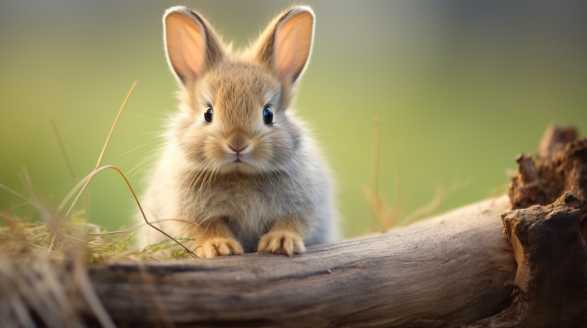
What Are Baby Rabbits Called
What are baby rabbits called? Let’s find out. Baby rabbits are commonly called kits or bunnies. These adorable furry creatures are born with closed eyes and no fur, but quickly grow into bouncy and lovable companions. Their playful nature and small size make them extra irresistible, captivating the hearts of both children and adults alike. […]
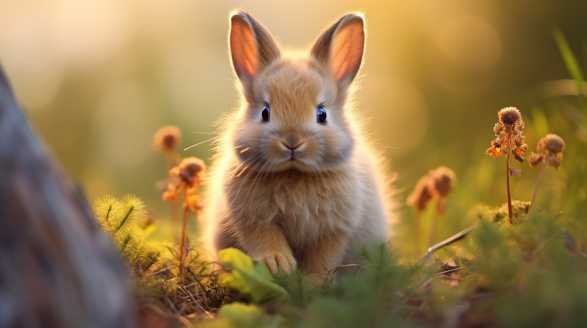
All About Baby Rabbits
Introduction Ready to learn all about Baby Rabbits? Join me on an journey as we explore the wonderful world of baby rabbits. From their adorable twitching noses to their binky-filled antics, these little furballs are sure to melt your heart and leave you smiling from ear to ear. Now, I must confess, I am head […]
